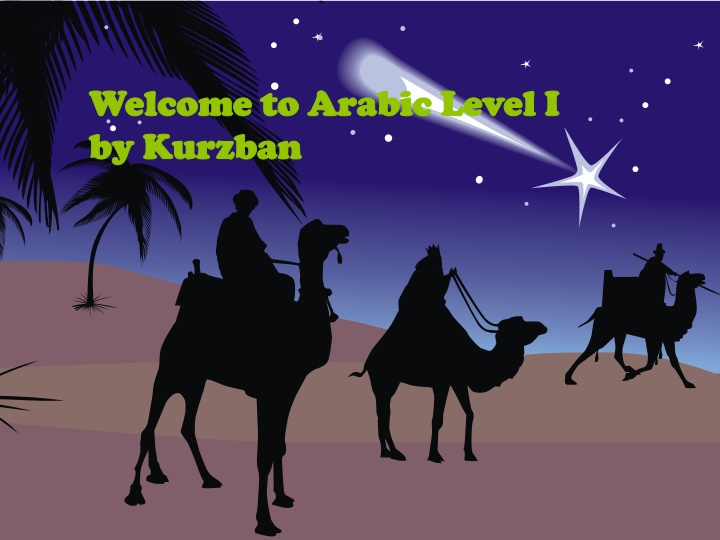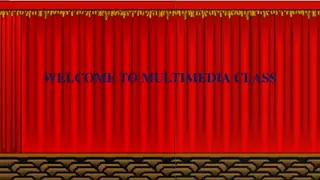
Arabic Language Lessons: Object Identification and Vocabulary Practice
Explore Arabic Level I lessons focusing on object identification with letters Haa, Mim, Lam, and Kaf. Enhance your vocabulary through exercises and learn about the shape variations of the letter Kaf. Practice with words and expressions related to possession and gender in Arabic.
Download Presentation

Please find below an Image/Link to download the presentation.
The content on the website is provided AS IS for your information and personal use only. It may not be sold, licensed, or shared on other websites without obtaining consent from the author. If you encounter any issues during the download, it is possible that the publisher has removed the file from their server.
You are allowed to download the files provided on this website for personal or commercial use, subject to the condition that they are used lawfully. All files are the property of their respective owners.
The content on the website is provided AS IS for your information and personal use only. It may not be sold, licensed, or shared on other websites without obtaining consent from the author.
E N D
Presentation Transcript
Welcome to Arabic Level I Welcome to Arabic Level I by by Kurzban Kurzban
Lesson 14: Objectives: Review Identifying Letter Haa, Mim, lam, and kaf objects from immediate environment Expressing Possession. Practice Aida Bogomolova The arts of Belly dancing https://www.youtube.com/watch?v=fD9StRmeOXM Click on these links to learn how to dance https://www.youtube.com/watch?v=tGFw-RO3Hdc
Do you recall the name of these objects? Use this is for M and This is for F
Ha at the end: Most likely will be used as (his/hers) = + + + + = + + +
Lesson 13: Building up your vocabulary Copy down and translate the following words on your paper several times and remember to proceed from right to left. Use this is: F?M? Ketaboun or Kitaab
Lesson 13: Building up your vocabulary Copy down and translate the following words on your paper several times and remember to proceed from right to left. _________ ___Hatifoun Haatif____
The letter Kaf. Its like ha, it changes its shape depending on how it is joined: If it stands at the beginning or in the middle of a word, it looks like this: If it stands on its own or is at the end of a word, it looks like this:
when it stands alone in the beginning or the middle of a word
Lets practice with kaf + + = Kalboun or Kalb
Practicing with Kaf + + =Kaakou n or Kaak
Practicing with Kaf: + + + Sokkar =
Practice connecting the letter Kaf + + + + = = + + + + + + + =
Lesson 13: Expressing Possession One way of expressing possession is by using a phrase made up of the adverb_ Literally, at and an attached pronoun. Together they form one word, Thus, in order to say to some one, You have a note book, ? You begin with the word and the attached pronoun {ka}, you
Lesson 13: you have? . IF you are done with these slides, please click on the Belly Dance video and learn some moves. I understand that some of you might not be into it, that s ok, practice and have fun. I will see you all on Wednesday for a Henna party.
Lesson 13: Building up your vocabulary Copy down and translate the following words on your paper several times and remember to proceed from right to left. :use this is F? M?
Lesson 13: Building up your vocabulary Copy down and translate the following words on your paper several times and remember to proceed from right to left. Use this is F?M?
Lesson 13: Possession Translate and answer the following questions: 1] You have a notebook? 2] You have a pen/pencil? 3] You have a book?
Lesson 13:My name? We have worked with another possessive suffix which we have used when you introduced yourself. The final long vowel ya in this case is an attached pronoun, meaning My . So to summarize, if you want to say: I have; use To say my book: use
Lesson 13: Practice Work with your partner or your group and write down 5 sentences in Arabic. Your partner should be able to read it fluently and be able to translate it. Hand in your paragraph as an exit ticket for the day.
Lesson 13: Inquiring about and identifying Arabic Cities The map below displays some of the names and locations of some Arab cities.
Combine the letters in each set, including short vowels, to form words






















